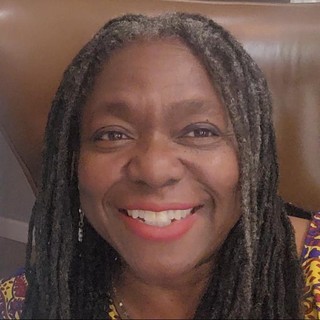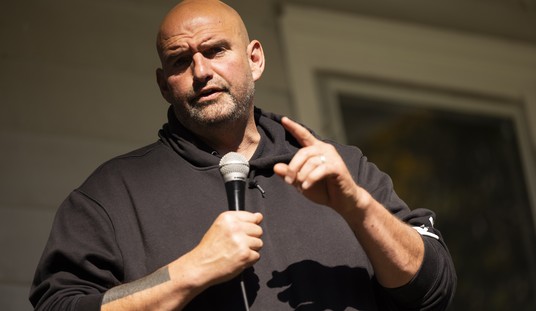Judge Amy Coney Barrett was sworn in yesterday as an Associate Justice of the Supreme Court, after a mildly contentious confirmation process. Justice Clarence Thomas, the most senior Justice on the Supreme Court did the honor of conferring the oath of office.
It was a Kodak moment and a reflection of my age, as I was old enough to watch history happen 29 years prior in 1991. Then President George H.W. Bush nominated Clarence J. Thomas for the Supreme Court. Thomas was filling the vacancy left by the retirement of Justice Thurgood Marshall, a powerful cultural and historical figure, especially to a Black woman like me. In 1991 I was a little less than half my current age (25 years old), and considered myself politically moderate. While I had problems with some Democrat policy points, they appeared to have the handle on individual culture and social justice on which the Republicans still didn’t have a clue. So Justice Marshall and his life, not only as the Chief Justice of the Supreme Court, but as a powerful attorney with the NAACP who oversaw decisions like Brown v. Board of Education, was a seminal figure. I was curious who the Republican President Bush would appoint.
Thomas reflected what many of the “conservative” judges of past nominations also reflected: you use the judicial process to come to a conclusion; you don’t create the conclusion and jerry-rig the process to match it.
Ultimately, it really didn’t matter what his philosophy was, as Justice Thomas said in the 2019 documentary about his life, Created Equal, “ ‘This is the wrong black guy, he has to be destroyed,’” Thomas knew the Democrat Senate Judiciary’s intent.
During the 1991 confirmation hearings, the late Senator Howell Heflin of Alabama referred to him as “somewhat of an enigma”. Thomas responded, “I am simply different from what people painted me to be.”
I could fully relate to both those: people trying to paint you into an image that fits their viewpoint, and people trying to destroy you because you didn’t. My own family didn’t know what to make of me, let alone my peers, who took any opportunity to pick at the fact that I didn’t talk or think “Black”. After watching Justice Thomas’s documentary, I understood more fully why I identified with his story.
Even back then, I was a political junkie. I had actually read about and watched the highlights of the 1987 Bork confirmation hearings and saw the way the egregious Senator Teddy Kennedy treated Judge Bork. I thought it was shameful, and it had the intended effect. The Senate voted 58-42 to defeat him. It was the largest negative vote ever recorded for a Supreme Court nominee. So, I was curious to see what kind of treatment Clarence Thomas would receive.
I was wholly familiar with not only the conservative leanings of Clarence Thomas, but the condescending treatment he received from others, but especially the Senate Judiciary Committee. Because of my own lack of clear identification in the Black Community, and choices made by my mother in terms of my schooling, I spent my formative years as a “raisin in the sun”. So I recognized that thinly veiled shock, the sanctimony, and the condescension disguised as concern from the society around me. What I appreciated about Thomas was his ability to maintain respect, but to clearly put these Senators in their place. He did this throughout, even after the Anita Hill allegations reared their ugly head. In their efforts at destruction, the Senate Judiciary Committee, led by then-Senator Joe Biden, ended up producing a hero—at least for me.
Those powerful words, “I’d rather die than withdraw from the process” struck me like a lightning bolt, and closely mirrored my own resolve and beliefs: I will not allow you to destroy me. I never believed the last-ditch personal attack of the Hill allegations, and evidence and years of scrutiny has shown that it was a coordinated attack that had no teeth. This would sadly be repeated on steroids in 2018 with the Kavanaugh confirmation.
What I most despise is that what should have been a high point of history for all Blacks, and for the nation, was turned into a circus, thanks to the Leftist political agenda. Instead of allowing history to be made, they wanted to shape history according to their vision. The Democrat/Leftist predilection towards social engineering has always bothered me. It is a disservice to all races, but especially to mine.
Fast forward to 2020, and President Donald Trump’s nomination of Amy Coney Barrett to fill the vacancy left by Supreme Court Justice Ruth Bader Ginsburg. My political leanings were more deeply entrenched in conservatism by the time Judge Ruth Bader Ginsburg was nominated by President Bill Clinton. While I admired Justice Ginsburg for her life story and being a trailblazer for working women and women in law, her philosophy of judicial activism, a living Constitution, along with her staunch support for Roe v. Wade was troublesome. She served her role on the Court with distinction, became a feminist icon, and at the time of her death was as historical and consequential as Justice Thurgood Marshall. So I knew her death, and the subsequent confirmation would be even more contentious than Thomas’s or Kavanaugh’s.
Amy Coney Barrett is an accomplished jurist who already served in the 7th Circuit Court of Appeals; but like Kavanaugh, her personal life was what Democrats and the Left were attempting to target. A devout Catholic, pro-life, and a working mother with 7 children of her own: two who were adopted from Haiti, and one who is special needs. The identity politics party had little to attack, but they went there anyway. With Clarence Thomas, they attempted to put him into a particular racial box, and then tried to destroy him when they could not.
With Judge Barrett, she hit all of the supposedly feminist markers of freedom of choice, but the fact that she chose to be a person of faith, a loving mother and wife, and an accomplished jurist did not fit the narrative.
As a pro-life, religious woman (no kids) with my own list of vocational accomplishments, I could relate to that paradigm too. The social engineering and narrative created for women who the Left feels should rise to such an accomplishment is not a structure that either Judge Barrett or I fit into. But instead of tossing out the structure, they instead attempt to destroy the person who defies it.
It was a beautiful thing to watch them attempt, but not succeed. Like Clarence Thomas in 1991, Judge Barrett was respectful, attentive, but put the Senators in their place when the need required. She did this simply by being who she was: an exceptional legal mind, an originalist, and a wise educator who broke her philosophy down clearly, while making you feel smarter for having heard it.
All that was left were temper tantrums and lies. The Trump administration, Senate Majority Leader Mitch McConnell, and now Justice Amy Coney Barrett stood out as the adults in the room.
It is ennobling that history has been made and expanded by these two divergent, yet complementary appointments. As a Black, female conservative, it is a blessing to see history being allowed to form, rather than engineered to suit a certain end.
Update 10-27-2020 10:50 p.m.: Thanks to commenter Dagwood for the correction of events on Judge Robert Bork. The Senate voted against his nomination; he did not withdraw it.














Join the conversation as a VIP Member